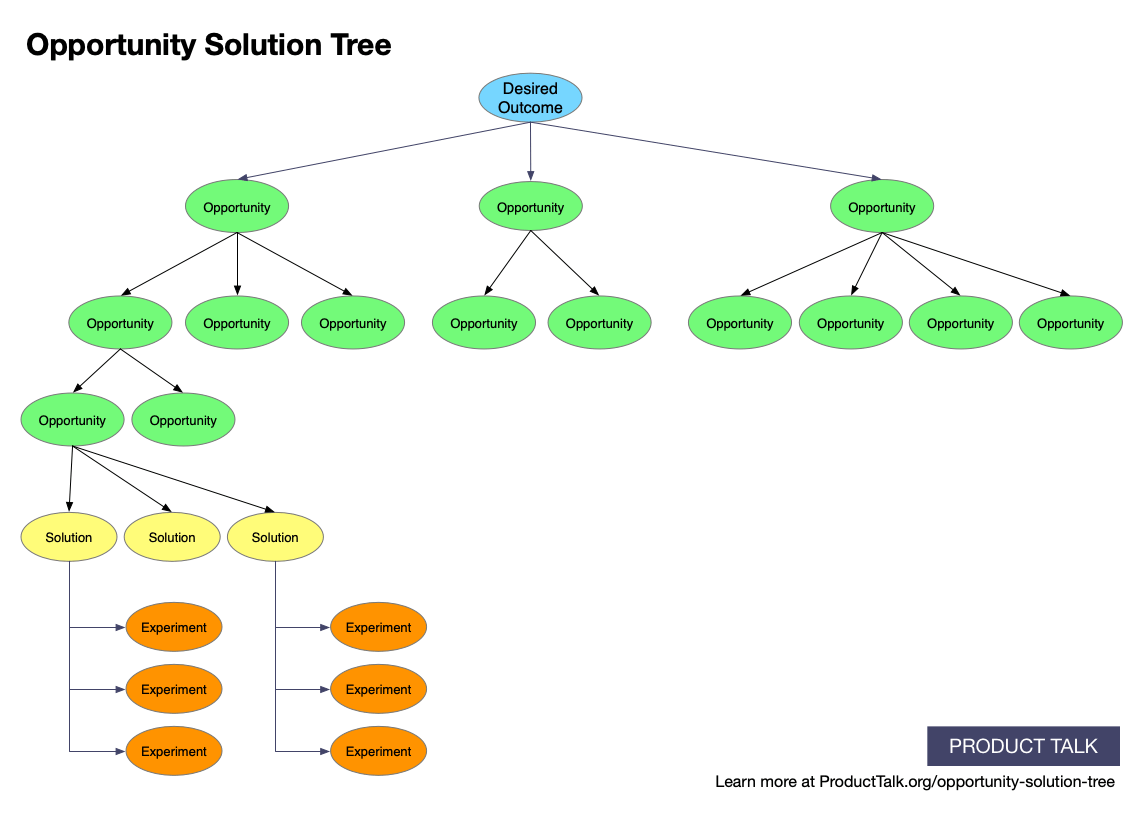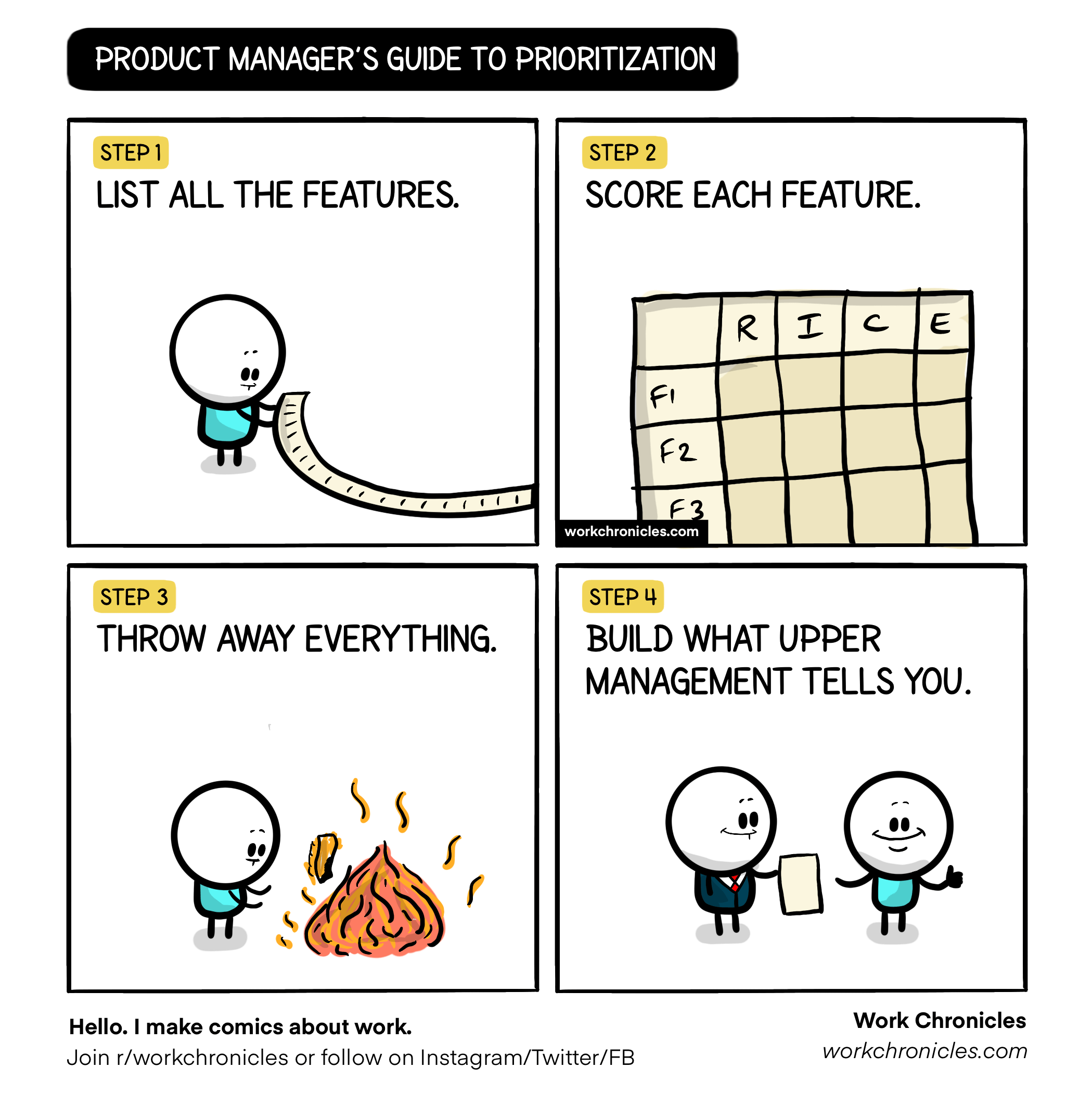Opportunity Mapping and Prioritization 🎯
In product discovery, the key to building successful products is identifying the right opportunities to focus on. Opportunity Mapping helps us organize and prioritize customer pain points and needs, while Prioritization ensures that we focus on the most impactful opportunities. This section will explore both processes and how they guide product teams toward smarter decisions.
What is Opportunity Mapping?
Opportunity Mapping is the first step in the product discovery process. It involves identifying and grouping customer pain points, needs, and desires to uncover high-value areas that your product can address. Opportunity Mapping is an ongoing practice that evolves with each discovery cycle, ensuring that you’re always focused on the most pressing customer problems.
The Role of Opportunity Solution Trees (OSTs)
An Opportunity Solution Tree (OST) is a visual framework that helps you connect identified opportunities to potential solutions and experiments. By visualizing how opportunities lead to solutions, you can better understand which opportunities are worth prioritizing and how to validate them through tests and experiments.
- Opportunity Mapping → Identify and group opportunities.
- Opportunity Solution Trees → Connect opportunities to potential solutions and experiments.

An Opportunity Solution Tree helps visualize the connection between opportunities, solutions, and experiments.
How to Prioritize Opportunities
Once you’ve mapped out the opportunities, the next step is prioritization. This involves evaluating which opportunities will have the highest impact on your customers and business. Prioritization helps focus resources on solving the most important problems first.
Prioritization Techniques:
- RICE: Prioritize based on Reach, Impact, Confidence, and Effort.
- ICE: Focus on Impact, Confidence, and Ease.
- Custom frameworks: Tailor prioritization models to fit your unique context.
Prioritization Challenges: A Comic
“When every opportunity feels urgent… and your roadmap looks like a game of ‘Whack-a-Mole’.”

The daily struggle of prioritizing! 😅
How to Link Opportunity Mapping to Continuous Discovery
Opportunity Mapping is not a one-off exercise—it’s a practice that should be updated regularly based on new insights from customer interviews, feedback loops, and ongoing testing. As you gain new insights, revisit your opportunity map and adjust your focus based on what you’ve learned.
Real-World Example: How Airbnb Approaches Opportunity Mapping and Prioritization
Airbnb’s product team has always focused on trust and safety as a core feature. Early on, through customer interviews and user feedback, Airbnb identified concerns around the verification process for both hosts and guests. They mapped these pain points into opportunities for improvement, such as streamlining the profile verification process and building trust in the platform.
Rather than relying on rigid frameworks, Airbnb uses a more iterative approach, constantly revisiting and adjusting their priorities based on ongoing feedback and user testing. They prioritize issues that directly affect customer trust, using rapid prototyping and A/B testing to validate solutions in real-time.
This approach allowed Airbnb to increase user confidence, leading to higher conversion rates and better customer satisfaction.
Conclusion
Opportunity Mapping and Prioritization are critical steps in product discovery. Mapping helps you identify the right problems to solve, while prioritization ensures that you focus on the most valuable ones. Together, these processes guide your product team toward creating solutions that truly address customer needs.
Now that you understand Opportunity Mapping and Prioritization, let’s dive into Customer Interviewing and Feedback Loops to explore how to gather the insights that will fuel your discovery process.